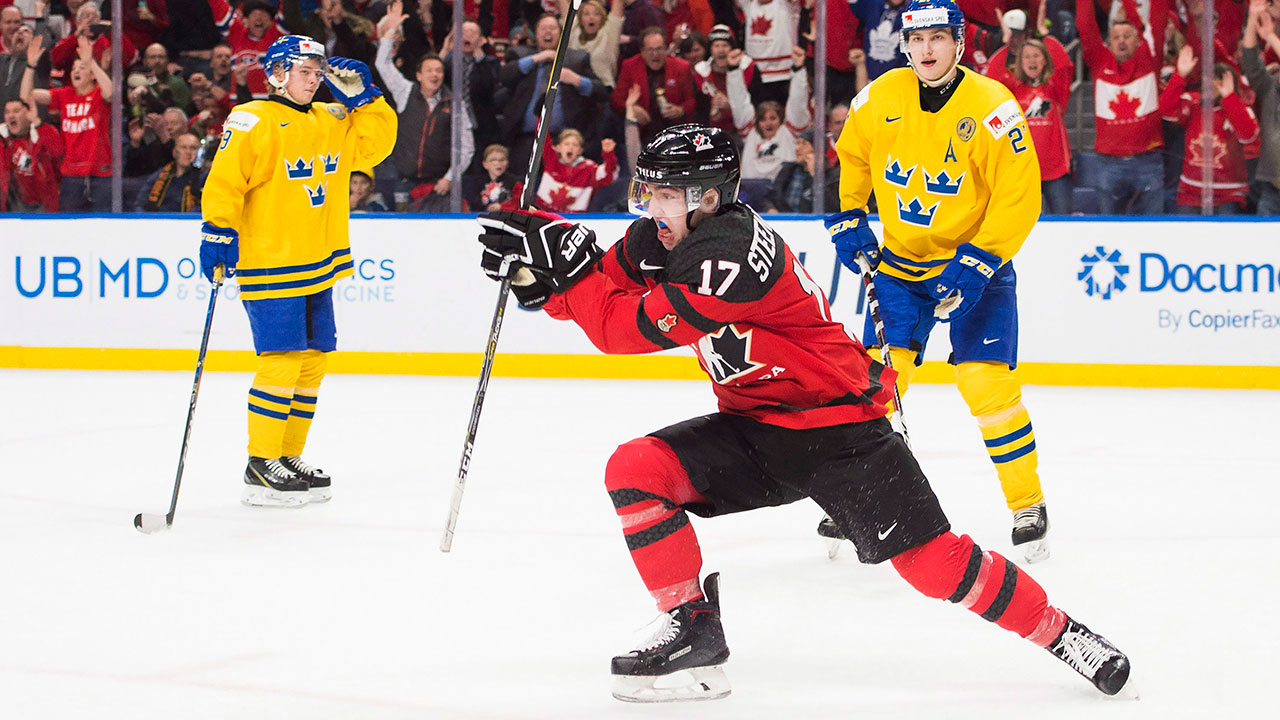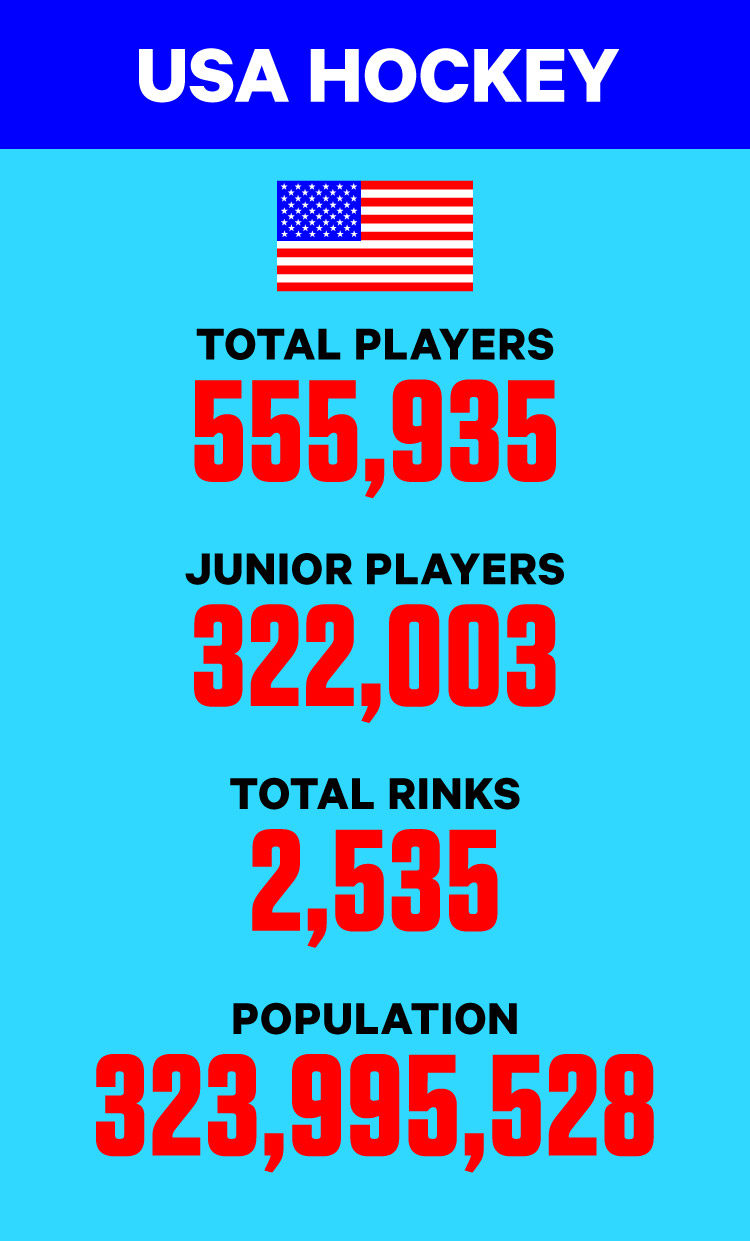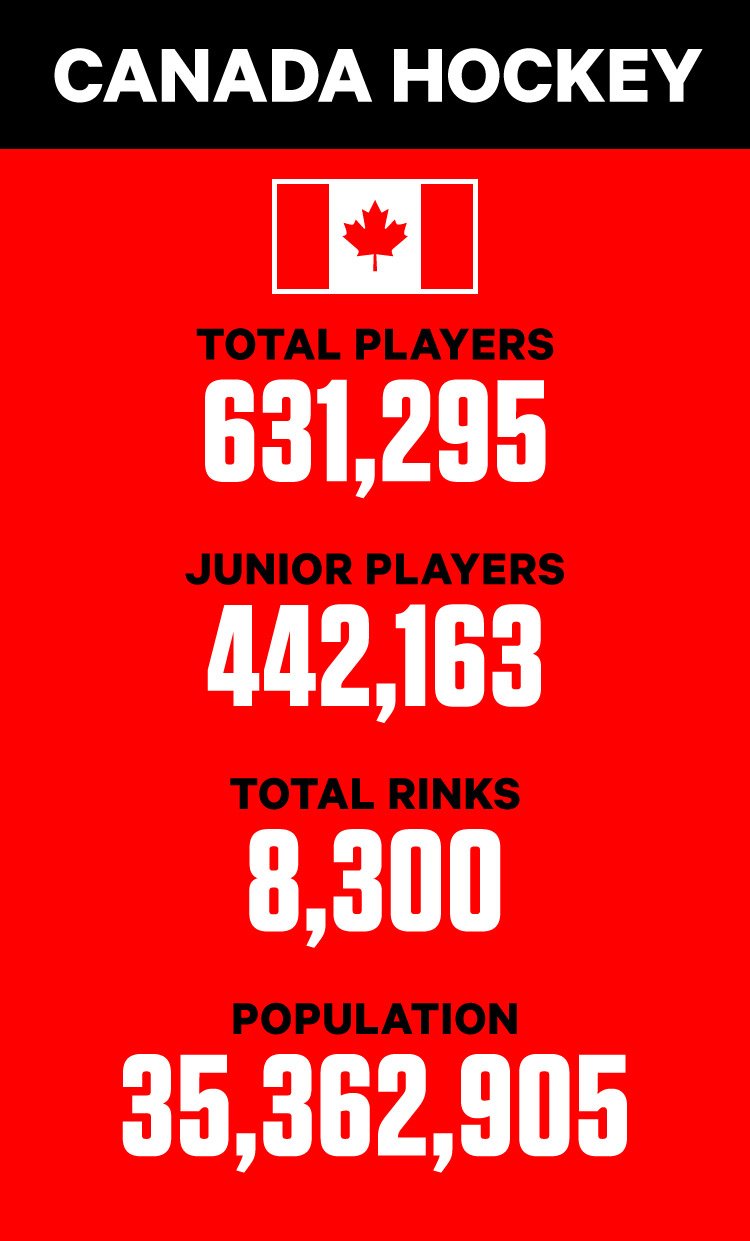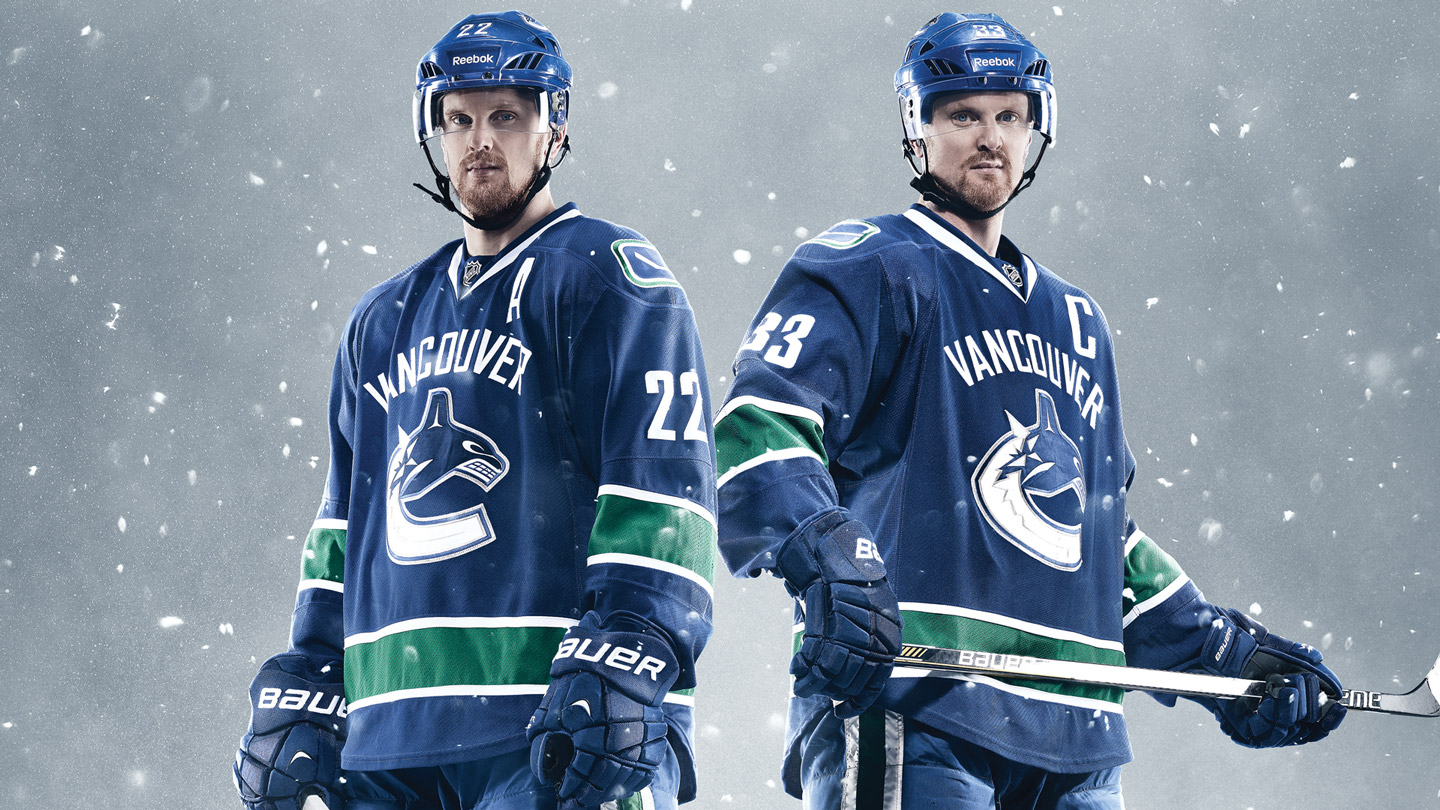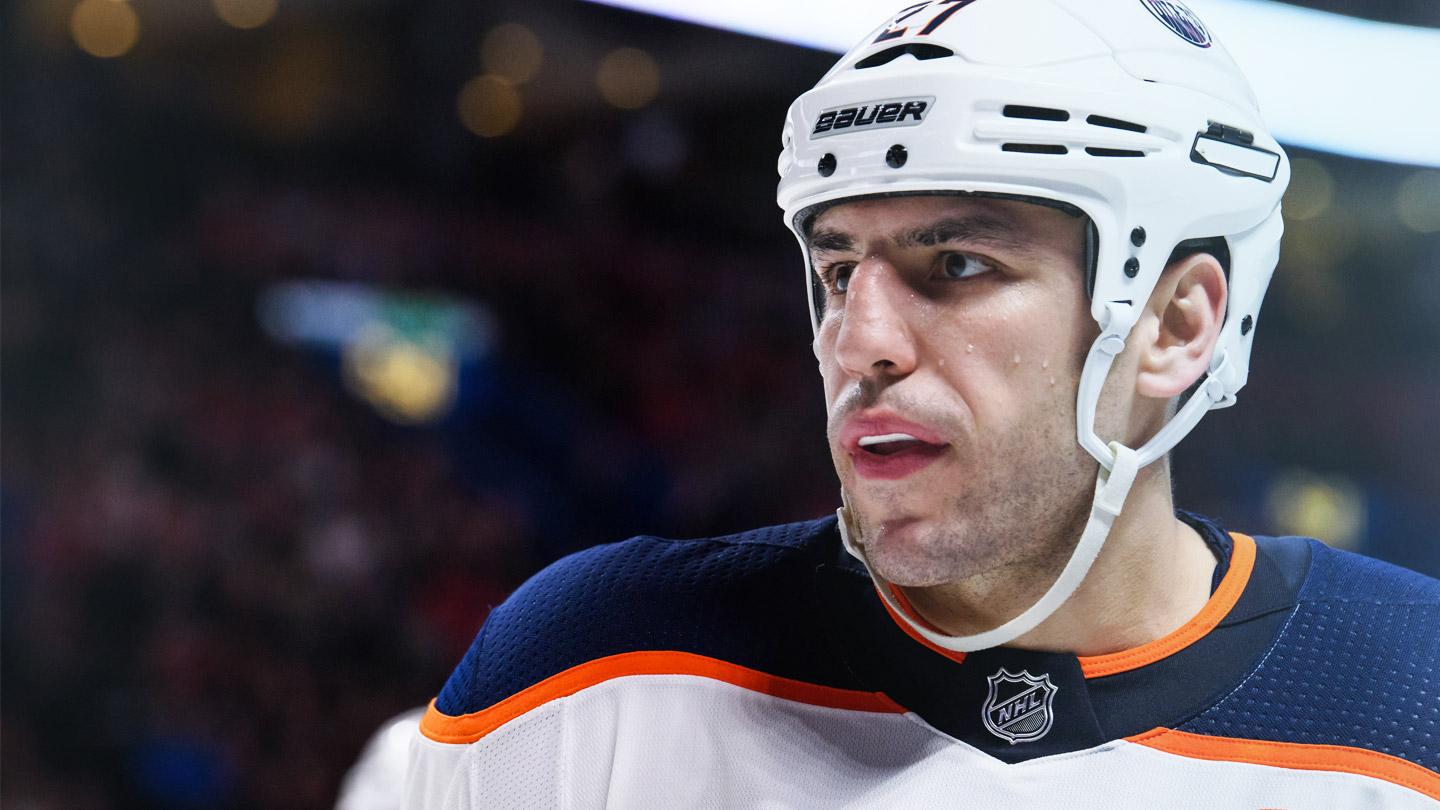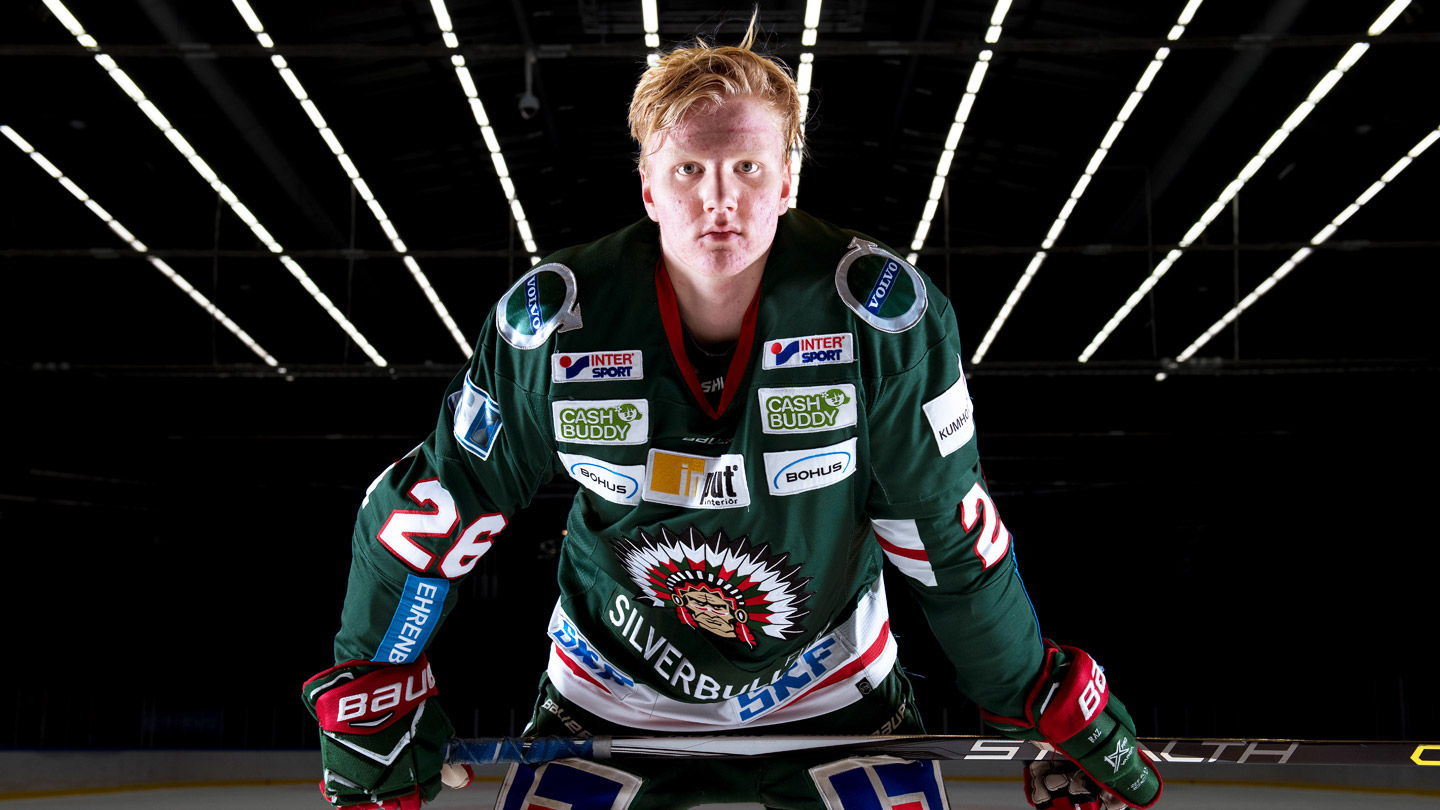Trevor Janicke skates into a corner on the forecheck and bumps into a defenceman. He leans in, his stick is busy, but it’s more industry than effectiveness. The blueliner seals Janicke off, keeping his body between the checker and the puck. Janicke tries to press him into the glass but in a couple of beats the puck is wrapped around the boards and cleared, and play moves up the ice.
It reads like a vignette that’s repeated hundreds of times in any given game, a bit of conflict, a battle that everyone goes into on level terms, as fair as the ice is flat. But once you know the teams and the players involved, the sequence takes on a different cast. You understand that in this mano-a-mano there is only one man in the frame.
The defenceman plays for Michigan State. He’s coming up on his 22nd birthday. He has spent three years on campus, three years training in a major NCAA program. He’s an adult — an emerging adult on many counts, yes, but an adult in the physical sense.
In his second season in the USA Hockey Development Program in Plymouth, Mich., Janicke is, without a slight intended, a boy. Maybe you’d say a 16-year-old from Maple Grove, Minn., is a “young man,” but next to an opponent five or six or even seven years older — a situation Janicke frequently finds himself in — he is a boy competing against men. The game against Michigan State isn’t a one-off. It’s the eighth time this season that USA Hockey’s under-18 team has faced NCAA Division I competition in a live game — the teenagers have managed one narrow win and taken some serious lumps a few nights. Six more of these cross-pollinating games remain on the under-18s’ schedule. The Spartans are a young, rebuilding program with just a couple of seniors in their lineup, so if the U.S. kids are going to get a win against a Division I program this might be the best shot, maybe the last shot.
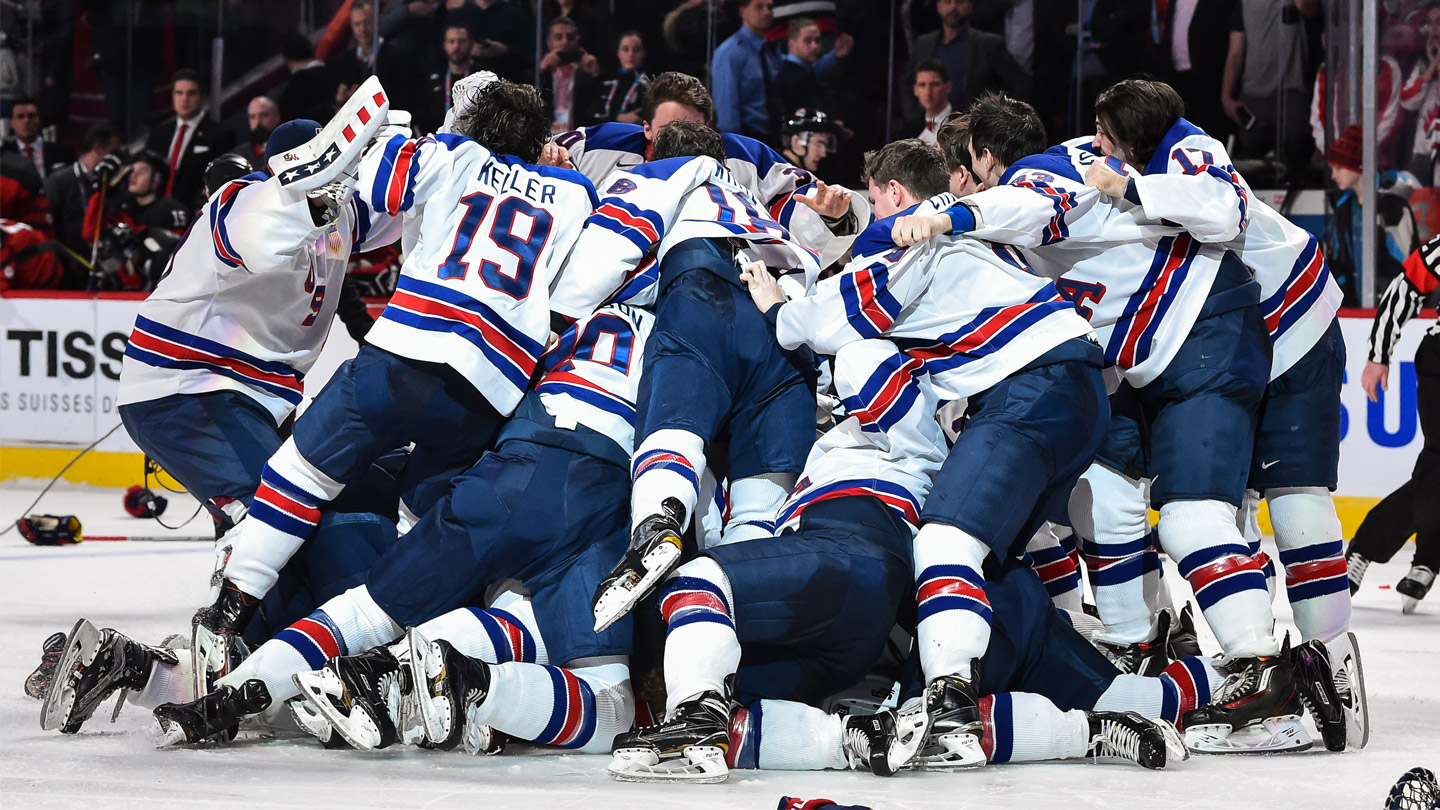
The NTDP has been around for two decades and you don’t have to be a very devoted hockey fan to know it by reputation. It has been a rite of passage for a couple of generations of American-born stars and its under-17 and under-18 teams have turned out dozens of major players. You could form a pretty handy all-star team from the program’s alums — just for starters you’d have Patrick Kane, Auston Matthews, Jack Eichel, Dylan Larkin and Phil Kessel up front, Seth Jones, Zach Werenski, Charlie McAvoy and Jacob Trouba on the blueline, and John Gibson in goal.
If you’ve been keeping track, you know that the NTDP has dominated play at the IIHF under-18 tournament in recent years: nine golds, two silvers and two bronzes in the past 14 tournaments. You might even know that the American teenagers have won four golds and two silvers at Hockey Canada’s World Under-17 Hockey Challenge, the top tournament for that age group. And you’d also have put together that the program has made a significant contribution to the success of American teams at the world junior tournament: three golds and three bronzes since 2010.
The disappointing bronze as hosts in Buffalo this month notwithstanding, the U.S. has to be considered to be the leader among nations in development of young hockey talent. Says American under-18 coach Seth Appert: “In any given year, 60 to 80 per cent of the players on the world junior roster have put in time in our program — and that number would be higher if the few top ones weren’t in the NHL [at 19].”
But really, hockey fans in Canada, like hockey fans pretty much everywhere else, aren’t keeping track of the NTDP — you see American sides for a couple of games at the IIHF under-18s and maybe, maybe, a game at the Under-17 Challenge. Yeah, NHL scouts track every game but the NTDP has largely remained off the media radar.
At one time, the rosters of the NTDP teams were comprised of elite players drawn from New England and Michigan, basically bilateral all-star teams from regions with strong grassroots programs, with Minnesota kids like Janicke mostly staying home. Now the program is drawing more broadly, not just cracking Minnesota but other states with emerging hockey traditions or really none at all, where players would effectively be out of elite competitive options at age 15 or 16 — this season’s under-17 and under-18 teams feature players from California, Maryland, Texas, Florida, North Dakota and Arizona.
No top teenage talent need go under-served or lost simply by reason of his origins. Which is to say that the program is drawing talent not just from far and wide but an eve- expanding population base. At the 2016 World Cup, Team North America, the young-stars sensation of the tournament, featured eight NTDP alumni — it’s easy to envision a reboot of this team a few years down the line might actually feature fully half of the roster having put in time with the program.
But exactly what is this hothouse for talent that USA Hockey has created? How does it turn out elite players every year? And is there any lesson that Hockey Canada executives can draw from their chief rivals’ program — improbable as it might sound to the chauvinists among us — lessons that can be imported north of the border to the cradle of the game?

A few years ago, when I made my first trip to the NTDP’s base, then in Ann Arbor, I had a mental picture of what the program was going to look like. I visualized a state-of-the-art training centre replete with all the latest in hardware and software, resources that would lap CHL teams and rival top NCAA programs. After all, USA Hockey underwrites the program and many national sports outfits south of the border professionalize youth development, giving adolescents and teenagers the type of support available to the famous names and millionaire pros. I thought that USA Hockey would have tried to create something of a country club atmosphere, better to recruit elite players who had the option of playing in programs close to home or casting their lot with Canadian Hockey League teams.
I had it all wrong.
The NTDP’s old home was a fairly unimpressive rink facility known with no affection as “The Cube.” The team weight room was unremarkable, old-school dingy and not lo-tech so much as no-tech. The stands seated a couple of hundred. Yeah, the walls were decorated with photos of the alums and the Stars-and-Stripes motif abounded, but short of that The Cube could have easily passed for the home of a Junior A team — and a humble Junior A team at that, not one from a flush, moneyed suburb of a major Canadian city. The least remarkable aspect of this hothouse was the house itself. For all the hockey millionaires the NTDP turned out over a couple of decades, its facility had a decidedly working-class feel, and on this count the program needed an upgrade.
Two years ago, USA Hockey moved into a building a few minutes down the road from The Cube in Plymouth. Twenty years ago, Peter Karmanos Jr., the owner of the Carolina Hurricanes, built an arena for his OHL team, the Plymouth Whalers, and for his Compuware minor-hockey program, which was named for the tech outfit he founded. After Karmanos sold the Whalers in 2015, USA Hockey purchased the junior team’s old home. Thus, Compuware Arena became USA Hockey Arena and underwent some significant renovations and upgrades, including the installation of a gym on par with NHL teams’. The NTDP home now looks a lot more like I once imagined it would and, not surprisingly, it has turned into a drop-in centre for NHL players in the area who are looking for an off-season workout and skate.
But as nice as the new arena is, the greatest resource that USA Hockey has to work with is the players themselves.
Those outside the program tend to believe that the hundreds of hours of practice and dozens of games together across the season give the U.S. under-17 and under-18 teams advantages in international tournaments. They play better together simply because they play more together. That’s the conventional wisdom, and often the lament of opponents whose sides are drawn from national leagues and offered very limited opportunities to work together before big tournaments. This supposed bottom line: The American talent isn’t necessarily better, but cohesion tips the balance the U.S.’s way.
That, though, is a little too neat. It shortchanges the talent in the U.S. lineups.
The program’s philosophy is also its history: If you bring the best players together, they force each other to be better. Talent begets talent. “It’s not that complicated,” NTDP director Scott Monaghan says. “Every day some of the best defencemen in the country have to practice against some of the best forwards in the country. We get competitive kids. No one is guaranteed anything. Everyone earns his place and they earn it in practice, in games, in the weight room and in everything we do here.”
Another fundamental tenet seems unhinged from logic. As Monaghan spells it out: “We put the players in a lot of games that they probably shouldn’t win. We’ll play up [against an older team] and lose twice on a weekend 5-0 and 4-3. You see two losses; we see improvement and learning from one game to the next.”
And that is perhaps the secret of the NTDP: For teams that have earned a lot of gold medals at short tournaments, the season is long and often drenched with defeat. Says Monaghan: “In October, the kids in the under-17 are skating against 19-year-olds and 20-year-olds in the USHL, and those kids have the hell beaten out of them for two or three months. It shakes their confidence. It checks their egos.”
So it was with Trevor Janicke. When he reported for his under-17 season, he knew he was going to play and practice more than he ever had back in Maple Grove, but he really had no idea of the full extent. “[The under-17 team] was going to have 20 games in before my old high-school team had their first regular-season game,” he says. “I was excited about it. The first couple of months are so hard. I was sore all the time. I thought I knew what it was like to work hard but really it was just at another level.
“And then when got on the ice against the USHL teams, again, it was like nothing I ever saw back in Minnesota. I was 15 and in against really good players who were a year away from going to college — some of them were old enough to be in college but decided to play a season in the USHL [instead of redshirting as freshmen]. Every team had four lines — in high school, teams had a line you had to worry about, the best had maybe two.”
Before the start of the season, Janicke circled an October date on his calendar: a trip back to Minnesota and a game in the New Hope Arena, the rink where he had played in youth leagues for the first time as a kindergarten student. As the date drew near, excitement gave way to dread. Before the trip, the under-17s lost three straight games to USHL teams by a combined score of 16-4. Two losses to a Minnesota high-school all-star team in front of family and friends compounded the grief. For all its success in recruiting players from other regions, the NTDP has long found it hard to attract Minnesota kids, who prefer to stay home and play for their high schools — often the same schools as their fathers and grandfathers. The under-17s’ two losses weren’t the best bit of marketing for the program.
Things got worse for Janicke and his teammates as their season wore on. “It was tough,” he says. “We did win one of our last 15 or 20 games against USHL teams. There were some nights the guys just wanted to quit hockey. I didn’t have the year I imagined I would, and I’m sure that a lot of guys didn’t. Still, I didn’t ever second-guess my decision to come here.”
Says Coach Appert: “The experience in the first year here hardens the kids. You have players who came after scoring two goals a game or more back home. Then in the under-17 program they’re going months between goals. And what makes it even harder is that, unlike a high-school or college team or a pro team, you don’t have a veteran that the players can turn to. There isn’t a voice of experience. They’re all 16 and everyone is going through it for the first time together. It’s up to them to figure it out.”
If defeat hardens kids, then the 2016–17 under-17s were positively granitic. And the second season in Plymouth would harden them still.

Sportsnet’s newest podcast is a weekly deep dive into the biggest hockey news in the world. New episodes every Wednesday.
Apple Podcasts | Podcatchers | Listen Now
It was about 20 years ago that Jeff Jackson, then the coach of the program, thought that the under-18s could benefit from playing against NCAA teams. It was an out-of-the-box thought, one that was hard for Monaghan to sell to players’ parents. “I had to talk some parents in off the ledge and sometimes I still do,” Monaghan says.
Monaghan admits that he had no idea how it would turn out, sending teens in against collegians. “I remember the first game was against Michigan State, and the Spartans scored two goals in the first 45 seconds,” he says. “I looked up at the scoreboard and thought, ‘Does this thing go up to 100?’”
A couple of minutes later Adam Hall, who would go on to a career as an NHL journeyman, chased down a puck for a clean breakaway. Though Hall didn’t score, it seemed to raise his teammates’ spirits on the bench and the feared thumping didn’t come to pass. In fact, the teens beat the Spartans. If that game had turned ugly — as, in the beginning, it surely looked like it might — maybe the NTDP would’ve dropped the idea of playing games against U.S. colleges, games that have since become a cornerstone of the program. Says Appert: “In 20 years, only six teams in the program have had winning records against NCAA schools — and that’s when you include games against Division III schools.
It’s hard. The NCAA games are the real litmus test for the under-18s, just as the USHL is [for the under-17s.].”
The first game this year’s under-18 squad played against NCAA competition was in South Bend against Notre Dame, where Janicke’s father played and where he will head on scholarship in the fall of ’19. (Most of the NTDP players are high-school seniors but given his birthday is on Christmas, Janicke is still a junior.) “It was an amazing experience,” he says. “I was out there on the opening shift. I touched the puck off the faceoff and I was still looking around. I had thought about them being older and more mature and about how this is where I was going to be a couple of years away. And you could tell that there was a level of intensity that’s not like anything I played in before — even international stuff [in the under-17s]. But it didn’t even last the whole shift. I realized, you know, this is just a game. Play. Play it like any other game.”
Of course, that game against Notre Dame — currently ranked No. 2 in the nation this season — wasn’t at all like the games Janicke and his teammates had played in before. The same can be said of all contests against NCAA competition: Janicke wasn’t in Maple Grove anymore, there were no 14- or 15-year-olds he could blow by and embarrass with his dangles. “When you’re on the ice against an NCAA team, you have to adapt to survive,” he says. “You’re not thinking about winning the game. You’re thinking about just winning the shift.”
Monaghan puts an even finer point on it: “In so many parts of our culture, parents try to shield their kids and choose safe routes. They want to protect them from adversity or failure. The real risk to developing hockey talent is not making things too hard — it’s making things too easy. And we found that the young men in this program will respond to the hard things. However much they struggle, they’ll find a way and be better for it.”
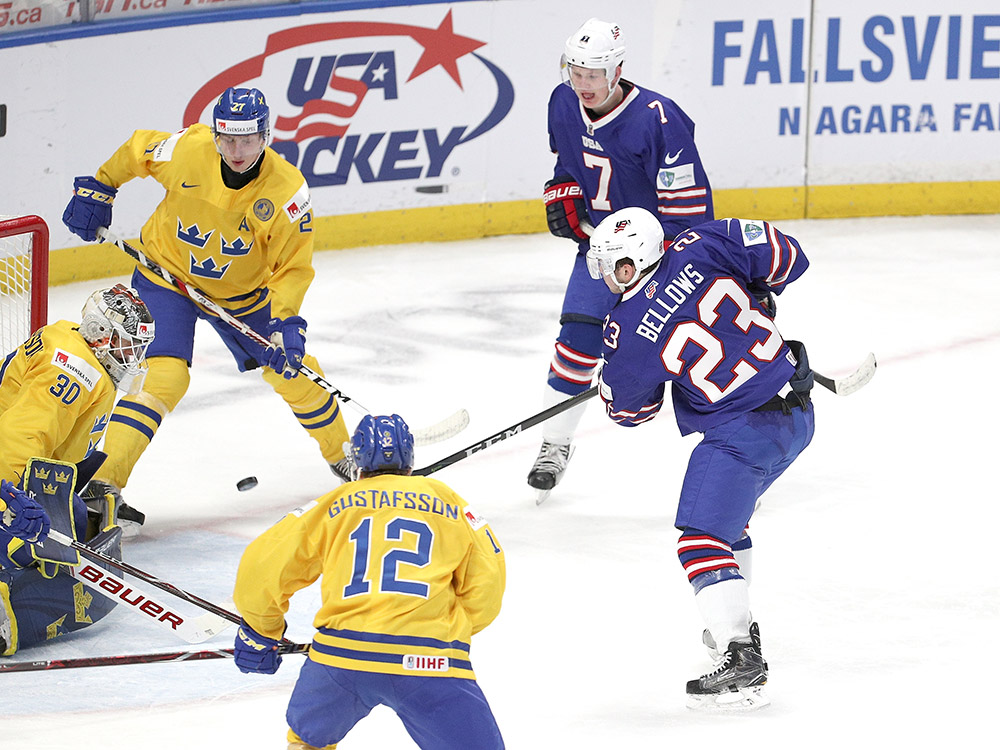
This notion of throwing boys in against men isn’t without parallel in sports and isn’t limited to sports such as tennis or golf where no physical risk is attached to the difference in age. In fact, it’s often an initiation into the most brutal and dangerous sports. Somewhere, a teenaged boxer on the rise is thrown into the ring with a fading 30-year-old opponent. For better or worse, growing muscle is tested by a guy who has made a living through the sport. And in hockey, the idea of boys skating with men isn’t limited to the NTDP.
In the European leagues, the very elite kids skate among mature pros, including more than a few former NHLers. This, though, isn’t a fair analogy to the USA Hockey program. Sure, Alexander Ovechkin played for Dynamo in the KHL from age 16, just as Rasmus Dahlin, the projected No. 1 pick in the NHL Draft this June, has logged big minutes the past two seasons for Frolunda in Sweden’s top professional league. But they are isolated cases, exceptions to a rule — in any given season in these leagues there might be a couple, a few or at most a handful making that massive leap up in class.
In Canada, there’s a resistance, an institutional resistance, to boys playing against men. If you’re junior-aged and not already in the NHL, you’re playing amongst your own. This is an odd exception in a hockey culture that places a premium on elite prospects “playing up” at some point during their youth, right up to the moment those designated as exceptional players jump to the CHL at 15. That’s where playing up ends for Canadian teenagers, but not the very best elsewhere and not those in USA Hockey’s program.
Is it reckless to send teenagers against collegians? The officials with the USA Hockey program will argue their case but they need not. Fact is, the desire of parents to get their sons into the program in Plymouth is the only endorsement the practice needs. Those parents include the former NHL players who have sent their kids to the NTDP: Keith Tkachuk’s sons Matthew and Brady; Brian Bellows’s son Kieffer, who tore up this year’s world juniors, leading the tournament in goals. It’s like the old line about roadside restaurants: If truckers eat there, it must be good. In this case, if an NHLer sends his son, then someone who knows the game intimately believes it’s the best of all possible options.

The NTDP squad hung around for, oh, 50 minutes or so against Michigan State. The Spartans took a 1-0 lead in the first period and held onto it into the third, but the ice was hardly tilted. It was one of those nights when the puck luck went the collegians’ way. When the teenagers tried to rally late, a couple of penalties killed their momentum. The game was in fact closer than the 3-0 final score.
The Spartans coach, Danton Cole, is in his first year in East Lansing, and the former NHL winger previously coached in the NTDP for seven seasons. He had been in Ann Arbor when the likes of Matthews, Eichel, Werenski, Jones and McAvoy came in at 16 and left as near-complete NHLers. “That team we faced tonight is a lot like the ones I’ve had,” Cole said. “They play a sound game. They skate well. They defend well. Their D is big — as big as anyone we had come through the program. They really compete, just like the other [NTDP] teams we had.
“Their first year [with the under-17 team] they’re so over-challenged — I don’t want to say ‘overmatched’ — it’s a hard learning experience. But they get perspective of what the program is about. They come to understand that this is how it’s done and how other teams before them went through it. The message is struggle is good… struggle makes you better.”
Trevor Janicke had nothing but a bruise or two to show for the hard shifts he put in, but he tried to keep it in perspective. “I think I’ve been better in my last few games [against NCAA teams] than back in October,” he says. “I’ll see when I look at the video what was good and what wasn’t. It’s hard anytime you lose but I’ve had worse nights than this and there will be better ones for sure. And really, it’s all about playing at the [IIHF world] under-18s. We want to win the game and any game but that’s when we have to perform.”
And when they’ll have a chance to perform, for one of the few times in a season, against players born in the same millennium as them.

